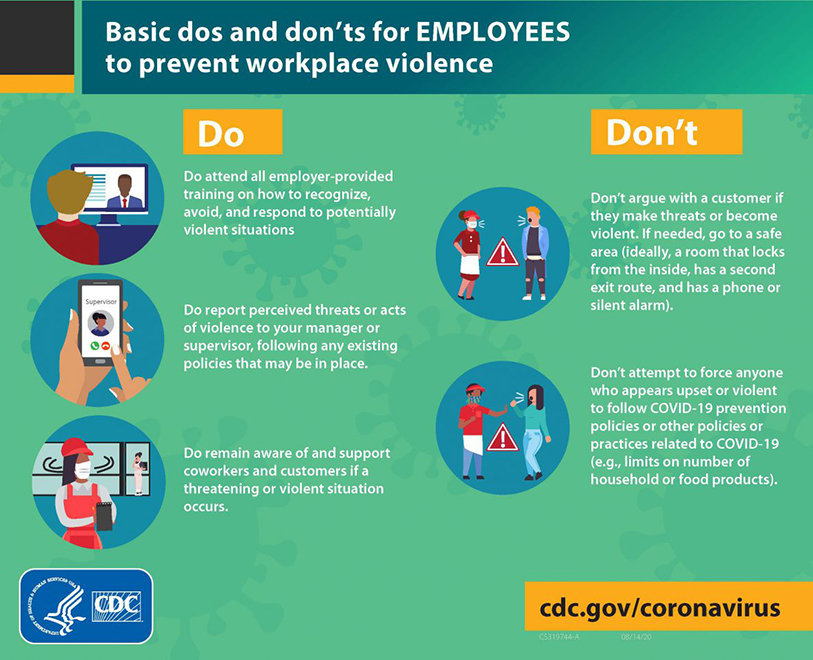As governments and businesses implement and attempt to enforce policies to help slow COVID-19’s spread, violent conflicts are erupting nationwide as some people refuse to comply. One such conflict in California involved a Los Angeles supermarket employee who asked a customer to wear a mask; the customer rammed the employee with her cart — so the employee pepper sprayed the customer.
To limit such violence stemming from COVID-19-related policies and practices — like mask requirements, asking customers to adhere to social distancing rules and limiting the number of customers allowed inside at one time — the U.S. Centers for Disease Control and Prevention (CDC) has released guidance that offers strategies for employers and employees in retail, services and other customer-based businesses.
In addition to its “Basic Dos and Don’ts for Employees to Prevent Workplace Violence,” as pictured above, additional CDC recommendations include:
- Advertising COVID-19-related policies on the business website;
- Posting signs that let customers know about policies for wearing masks, social distancing and the maximum number of people allowed inside;
- Assigning two workers to a team to encourage COVID-19 prevention policies be followed, if staffing permits; and
- Installing security systems (e.g., panic buttons, cameras, alarms) and training employees on how to use them.
The CDC also recommends providing employee training on threat recognition, conflict resolution and nonviolent response. In this training, employees would learn verbal and non-verbal cues that may serve as warning signs of possible violence, including speaking loudly or swearing, clenched fists, heavy breathing, fixed stare and pacing, among others. And the more cues a customer shows, the greater that individual’s risk of violence.
Employees also would learn how to appropriately respond to violent or potentially violent situations, including paying attention to a person and maintaining non-threatening eye contact, using supportive body language and avoiding threatening gestures like finger pointing or crossed-arms.
Because the CDC may make periodic updates, it’s recommended that employers in customer-or client-based businesses check the workplace violence guidance regularly.
Jessica Mulholland, Managing Editor, CalChamber
CalChamber members can read more about Warning Signs and Risk Factors for Workplace Violence in the HR Library. Not a member? See what CalChamber can do for you.
Looking for more COVID-19-related federal, state and local resources? Visit the CalChamber Coronavirus (COVID-19) webpage and access additional COVID-19-related HRWatchdog blogs.





